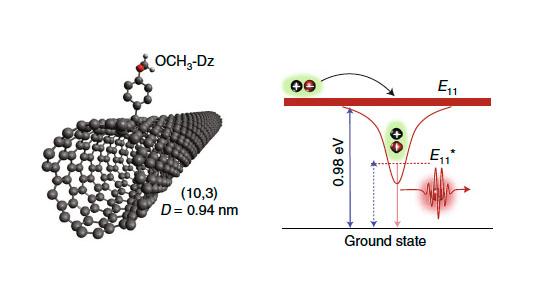A team at Los Alamos National Laboratory (LANL) is collaborating with colleagues at CNRS (The French National Center for Scientific Research) and Karlsruhe Institute of Technology (KIT) to investigate the single-photon purity, generation efficiency, and indistinguishability of single-wall carbon nanotubes (SWCNTs).

Researcher Stephen Doorn said that the LANL team is especially interested in advances in nanotube integration into photonic cavities for manipulating and optimizing light-emission properties.
“Nanotubes integrated into electroluminescent devices can provide greater control over timing of light emission, and they can be feasibly integrated into photonic structures,” Doorn said. "We are highlighting the development and photophysical probing of carbon nanotube defect states as routes to room-temperature single-photon emitters at telecom wavelengths."
Next steps will involve integration of the nanotubes into photonic resonators, to provide increased source brightness and to generate indistinguishable photons.
“We need to create single photons that are indistinguishable from one another, and that relies on our ability to functionalize tubes that are well-suited for device integration and to minimize environmental interactions with the defect sites,” Doorn said.
The LANL team previously developed the ability to chemically modify the nanotube structure to create deliberate defects to localize excitons and control their release.
The researchers also report on the primary challenges stemming from the properties of SWCNTs and the most promising roads for SWCNT-based chip integrated quantum photonic sources.
“Ultimately, we hope to draw more researchers into this field,” Doorn said.
The research was published in Nature Materials (doi:10.1038/s41563-018-0109-2).

